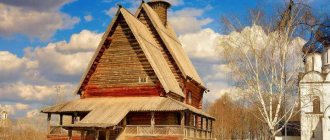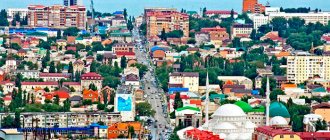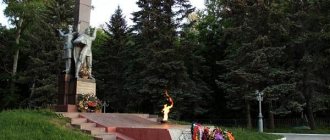Cathedral Church of the Life-Giving Trinity of Livny, Livny district, Oryol province.
Church of St. Nicholas the Wonderworker of Livny, Livensky district, Oryol province.
Church of the Resurrection of Christ Livny, Livensky district, Oryol province.
Sergievsky Church of the Livny Monastery, Livensky District, Oryol Province.
Church of Evangelical Christian Baptists in Livny, Livny district, Oryol province.
Cemeteries of Livny, Livensky district, Oryol province.
Livny is a city (since 1586) in the Oryol region of Russia, the administrative center of the Livensky district, which it is not included in. Being a city of regional significance, the city of Livny forms a municipal entity.
Livny is the second largest and most economical city in the region and one of three cities of regional subordination located on its territory.
The city of Livny is recognized as one of the most comfortable cities in Russia, category III (2nd place in 2008 and 3rd place in 2007).
The city of Livny received its name from the name of the rivers at the confluence of which it was originally founded. These are Livna Polevaya and Livna Lesnaya: 11.
Story
Coat of arms (1781)
The first mention of the city in chronicles dates back to 1177. It was the center of the appanage Principality of Liven, which was part of the Principality of Ryazan:49. Modern excavations have determined the location of this place, located 4 km from the current city along the Livenka River - at the confluence of the Livna Lesnaya and Livna Polevaya rivers. It is called by archaeologists Klyuchevskoye settlement. The settlement was a small settlement fortified along the perimeter with a total area of about 450 m². That is, a settlement of which there were half in Ancient Rus': 49-51.
This first city was completely destroyed in the 13th century during Batu's Western Campaign. At the same time, the Livensky appanage principality also disappeared: 12.
The revival occurred only 300 years later. The strengthening Moscow principality, which now included the Livny lands, needed to protect its borders. Therefore, since 1571, among 73 other fortified points of the southern border (watchmen), Ust-Livny appeared on the Sosna River: 12-14.
Enclosed by a tyn with observation towers and gates, service and residential huts, an alarm bell and a church, the Liven watchman guarded the bank of the Pine, 21 miles long from the mouth of the Truda River to the mouth of the Kunach River: 14. In 1586, a decree of Tsar Fyodor Ioannovich was issued, which reported: “... on Sosna, before reaching Oskol, two bottoms were ordered to be built for the city of Livny, and on the Don, on Voronezh, before reaching the rich backwater, two bottoms were ordered to be built for the city of Voronezh... What will be news on Livny about the arrival of military people in the sovereign Ukraine - send from Livny with news to Voronezh, - and from Voronezh therefore send to Livny with news”: 14-15.
Lieven's role at that time is revealed by at least two sources. The first is a letter from the Jesuits Chizhevsky and Lavitsky, sent to Putivl to supporters of False Dmitry I in February - March 1605. In it, in addition to the message about Livny’s transition to the side of the impostor, it says: “... Livny is not inferior in size to Putivl, the importance of this city in wartime is extremely great.” The second mention can be found in the notes of Captain Jacques Margeret, a contemporary, adventurer and professional mercenary who traveled in 1590 - 1606: “... the country is inhabited only as far as Liven, located about 700 versts from Moscow. Behind them there are various cities, namely: Borisov city, Tsarev city and others. This Tsarev City is almost 1000 miles away from what Lieven said. These cities are constantly being populated; They find the land very fertile, but they dare to cultivate it only in the vicinity of cities.”
Thus, by the end of the 16th century, Livny and Voronezh became part of the southern borders, which were later included in the Great Zasechnaya Line. They defended the state from raids from the Don steppes.
In 1778, Livny became a district town of Livensky district as part of the Oryol governorship (since 1796 - the Oryol province). In August 1918, a powerful anti-Bolshevik uprising took place in Livensky district. The rebels managed to clear the center of the county - Livny - from the Bolsheviks. After the arrival of reinforcements from Orel, the Bolsheviks returned Livny to their control; the rebel forces were scattered and destroyed. Since July 30, 1928, the city has been the center of the Livensky district of the Oryol district of the Central Black Earth Region (since 1937 - the Oryol region). On April 28, 1962, the city of Livny was classified as a city of regional subordination. Since January 1, 2006, Livny has formed the urban district “City of Livny”.
| Population | |||||||||
| 1856 | 1897 | 1913 | 1926 | 1931 | 1939 | 1959 | 1970 | 1979 | 1986 |
| 10 100 | ↗20 400 | ↗23 400 | ↘19 873 | ↘18 400 | ↘11 982 | ↗23 900 | ↗37 290 | ↗44 912 | ↗50 000 |
| 1987 | 1989 | 1992 | 1998 | 2000 | 2001 | 2002 | 2003 | 2005 | 2006 |
| ↗51 000 | ↗51 696 | ↗53 000 | ↗53 600 | ↗53 800 | ↘53 500 | ↘52 841 | ↘52 800 | ↘51 900 | ↘51 500 |
| 2008 | 2009 | 2010 | 2011 | 2012 | 2013 | 2014 | 2015 | 2016 | 2017 |
| ↘51 100 | ↘50 979 | ↘50 343 | ↘50 300 | ↘49 873 | ↘49 342 | ↘48 996 | ↘48 327 | ↘47 924 | ↘47 489 |
| 2018 | |||||||||
| ↘47 221 | |||||||||
As of January 1, 2022, the city ranked 338th out of 1,113 cities in the Russian Federation in terms of population.
House of merchant Adamov
Adamov, the owner of one of the largest mills in the country, lived in a pink mansion, which was located opposite the local Oktyabr cinema. History developed in such a way that during the revolution Adamov abandoned almost everything and took up politics. But this fact did not prevent the authorities from taking the mansion away from him, giving him only one small room in it.
Culture and attractions
Museum of Local Lore
Adamovskaya mill
The oldest surviving historical and architectural monument of Liven is the St. Sergius Cathedral of the Archbishop of Oryol and Liven, built in the 17th century:59. In addition, throughout the city, in its central part, there are many buildings for various purposes that arose at the turn of the 19th and 20th centuries. A significant number of them are marked with memorial plaques. For example, the buildings of the Theological School and the Russian-Asian Bank presented below in the photo gallery.
Near the modern city limits you can see a very interesting example of ancient industrial construction - the Adamov Mill. Created at the end of the 19th century:25 using the then latest reinforced concrete building elements and an electric drive from the turbine to the millstones, it was one of the largest enterprises of its time.
The city has a local history museum with an art gallery, libraries, cinemas, several parks and sports facilities, a number of higher, secondary and primary educational institutions, as well as an art school called “Khudozhka”.
In the suburb of Liven, on the site of the massacres of residents of the city and surrounding area by communists in 1937-38, the Lipovchik Memorial is located.
Liven accordions
Main article: Liven accordion
Pre-revolutionary Livny were famous for their accordions: 265-275. Its prototype came to Russia from Germany in the 30s of the 19th century. In 1860, such German instruments began to be produced in Tula. Their peculiarity was a different tone of sound when moving and collecting furs. Something similar still remains with German harmonicas. When they decided to open production in Livny, following the Tula model, the design of the accordion was noticeably redesigned. Among other things, the tone of the sound ceased to depend on the direction of movement of the bellows and, in general, a new original instrument was actually created. Initially, Livenka was single-voiced. That is, when you press a key, one valve opens and this leads to the appearance of one sound. Later, two- and even three-voice instruments appeared with a difference in tones of one octave.
Pleshkovsky pottery
Pleshkov ceramics by O. Jakubson
Livny places are also famous for their pottery making.
One hundred meters from the village of Pleshkovo, named after the surname of its founder back in the 16th century, there is a deposit of refractory clay, the volume of which is estimated at 4 million tons: 439. Local residents, unable to fully support themselves by farming, were forced to look for extra work, which became pottery. In 1880, the “Index of Trades of the Oryol Province” reported that “... the Pleshkovo fishery has a considerable history”:445. However, its heyday coincided only with the beginning of the 20th century; At that time, the village had about 100 households, where about 500 people lived.
Until 1929, potters worked individually. Then they were united into a promartel, which produced both household clay products - dishes, toys, etc., and bricks. There were about 15 craftsmen working on the potter's wheel. About 50 more were involved in the procurement of clay and the production of bricks. Bricks were made exclusively in the summer directly at the place of clay extraction, and dishes were made year-round, indoors. Firing was carried out in special kilns arranged for fire prevention purposes away from housing. Small toys, usually whistling ones, were fired in home ovens (sometimes simultaneously with cooking). It is interesting that firewood for burning, due to the lack of forest, was purchased everywhere in the area where dilapidated buildings were sold for scrap.
Work in the artel required great physical strength, especially when preparing clay. Everything was done by hand; mechanization was present only in the form of horses. Only after the Great Patriotic War, stoves began to be heated with fuel oil instead of firewood.
Pleshkov products sold out well at numerous fairs in the Oryol and Kursk provinces. The high quality of clay and the skill of the craftsmen ensured the production of light, elegant and durable products. The dishes were generally made to “ring”, and they really did ring when struck with a click.
The range of dishes was quite wide. These are kitchen and flower pots, jugs, bowls, plates, mugs, kvass pots for making kvass, large vessels of 10-20 liters (makitra) for storing bulk and liquid products. From building products they made (except for bricks of various shapes) chimney pipes, tiles and tiles for lining stoves, and tiles for roofing.
Whistle toys were usually made by the female part of Pleshkovo. They did not bring any noticeable income and were sold for literally a penny, but as gifts for children at the fair they were in great demand. Usually these were dolls, soldiers, ducks, horses; All of them were adapted for whistling: for animals or birds the whistle was built into the tail, and for soldiers or ladies the right hand whistled. Sometimes the whistle contained several additional holes, which made it possible to play along with simple melodies.
The Pleshkovo potters' workshop ceased to exist in 1952. The metallurgical, glass, porcelain and earthenware industries, which had recovered by this time, significantly reduced the demand for clay products. Along with the promartel, the production of Pleshkov toys gradually disappeared.
Temples of Lieven
The beginning of the construction of fortresses in Rus' traditionally began on one of the Orthodox holidays and was combined with the laying of the Cathedral Church corresponding to the holiday. For the Livensky fortress, the so-called Small Fort, in 1586 the foundation day was Trinity, and the temple, accordingly, was the Cathedral Church of the Life-Giving Trinity, whose location approximately corresponded to the center of the modern city park. Subsequently, as the population grew, in addition to the Trinity Cathedral with the limit of the Nativity of the Virgin Mary, the Church of St. Nicholas the Wonderworker and the Resurrection of Christ with a nunnery, the Prophet Elijah with the limit of Demetrius of Thessaloniki, St. Paraskeva Friday, and the Ascension Church appeared:81.
Initially, all city buildings, including churches, were wooden and suffered from frequent fires. The first stone church was the Sergius Church of the Monastery, built in 1664. And the massive use of stone for construction began only after the next “great fire” that happened in 1774:82.
At the beginning of the 20th century, after the October Revolution, by decision of the authorities, Livny churches began to be closed and gradually dismantled for building materials. The last of them, St. Sergius Church, ceased operation in 1938. It became the only one restored under Soviet rule - this happened in 1948.
Since the end of the 20th century, after the completion of Perestroika, churches began to be built again in Livny. This time not only Orthodox, but also Evangelical Christians-Baptists. There is also a certain need for a Muslim place of worship.
St. Sergius Cathedral
The cathedral begins its history in the mid-sixteenth century, when the Tim River was donated to the church. The donor was Tsar Fyodor Ivanovich himself. At that time, a monastery operated on the site of the cathedral. More than twenty years later, the Cossacks attacked the church lands and robbed them.
The construction of the stone walls of the monastery began only in the next century, after a devastating fire that left no trace of the wooden buildings. It would seem that all the misfortunes were already behind us, but in the eighteenth century they tried to demolish the monastery, but the religiously faithful residents of Liven did not allow this idea to come true. Currently, the temple is located on Sergei Bulgakov Square.
Location: pl. Sergius Bulgakov - 15.
Monument to fallen soldiers
“Your feat is immortal,” says the inscription on the pedestal of the monument. On the pedestal there are three warriors, one of whom holds a weapon above his head. The monument is located on Victory Square, which is not surprising. Local residents and tourists fell in love with this monument, and a photograph against its background in wedding dresses can be found in almost every married couple among Livni residents.
Church of St. George the Victorious
George the Victorious is a significant figure in the history of Russia. So much so that he was canonized in Orthodox culture. It is not surprising that cathedrals and monasteries in his honor began to appear in many cities. Livny was no exception; in 1997, the Church of St. George the Victorious was opened on Oktyabrskaya Street (apparently due to the revolution).











